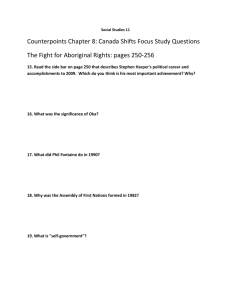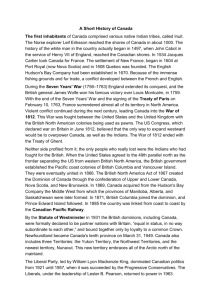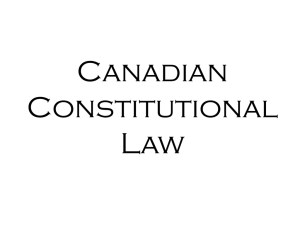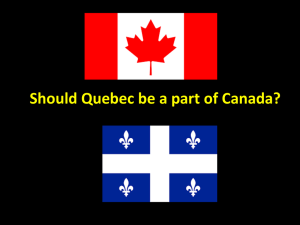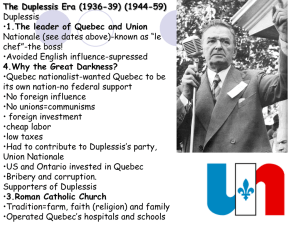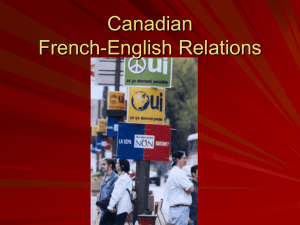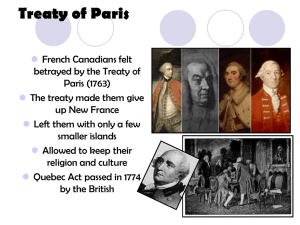The Evolution of Canada's Constitution Act
advertisement
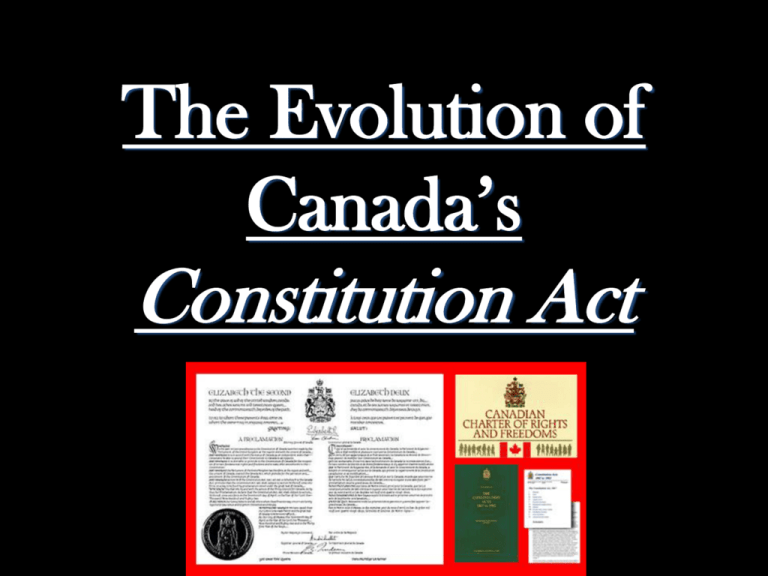
The Evolution of Canada’s Constitution Act When Canada signed the Treaty of Versailles in 1919 after WWI, Canada took its first step toward nationhood since the BNA Act, 1867. Canada had been automatically involved in the war in 1914 because we remained subject to Britain and bound to their foreign policy. Statute of Westminster, 1931 In 1926, The Balfour Report declared that Canada and the other dominions (Australia, New Zealand, South Africa), would no longer be subservient to Britain. The Statute of Westminster was created in response Canada was no longer subject to British laws and could pass laws that contradicted those of Britain. Canada was now independent of Britain in terms of foreign policy. Canada declared war all on its own, a week after Britain did in 1939! Although Canada became independent in foreign policy, our constitution remained a British statute. Liberal Prime Minister Pierre Trudeau was determined to reform the Canadian constitution In 1971, ministers produced a draft called the Victoria Charter, a written guarantee of rights that was initially accepted by the provinces and federal government. Quebec government, Robert Bourassa withdrew its agreement after the province harshly criticized it. 1976, Parti Quebecois (whose goal was the independence of Quebec) became the governing party in that province. http://www.youtube.com/watch?v=-7_a2wa2dd4 Trudeau continued to fight the PQ referendum on sovereignty-association: the concept put forth by Rene Levesque (leader of the PQ) whereby Quebec would become a sovereign jurisdiction in all areas of law making, but would maintain economic association with the rest of Canada. One of the most controversial issues became the entrenchment (ensuring that the constitution can be changed only through constitutional amendment) of a bill of rights. November 1981, the federal government along with 9/10 provinces agreed on the patriation of the constitution with an entrenched charter of rights and freedoms. Quebec felt ignored and refused to sign the agreement. April 17, 1982, the BNA Act was brought home to Canada. Canada’s constitution now included the Constitution Act, 1982, containing an amending formula that would allow all future amendments to be made within Meech Lake Accord Failure to persuade Quebec to agree to the patriation of the constitution in 1981 left many critics arguing that the constitutional deal was flawed. Progressive Conservative leader Brian Mulroney became new PM in 1984. He promised to reintroduce Quebec to the constitutional debates. 1987, at Meech Lake (near Ottawa) Mulroney attempted to get all 10 provincial premiers to agree to a constitutional package based on these proposals: The Meech Lake Accord would recognize Quebec as a “distinct society” and would give the provinces more power relative to the federal government. Trudeau thought this “distinct society” was dangerous and unnecessary: http://www.youtube.com/watch?v=NLkJbcW 33rE Aboriginal leaders were also upset at the lack of consultation with them over the proposed changes and that the accord didn’t address Aboriginal concerns. http://archives.cbc.ca/politics/constitution/topics/11 80/ The Charlottetown Accord Despite failure of Meech Lake, Mulroney proposed a national referendum (yes/no vote) in 1992. The Charlottetown Accord dealt with division of powers in forestry, mining, and cultural affairs. Aboriginal concerns were addressed (including Aboriginal self-government) but ultimately failed as well. 1995 Quebec Referendum Quebeckers would decide on whether or not they wished to remain a part of Canada. The end result was a 50.56% “no”. http://archives.cbc.ca/politics/federal_politics/t opics/1891/ “Rallying for Unity” http://www.youtube.com/watch?v=MUKorhH 5CFA
